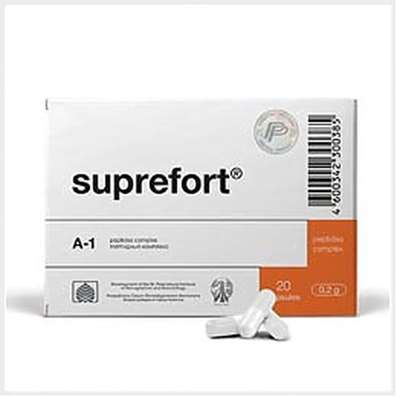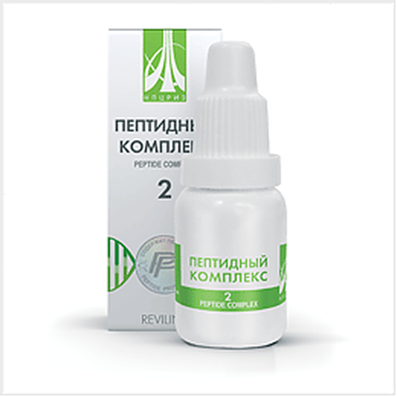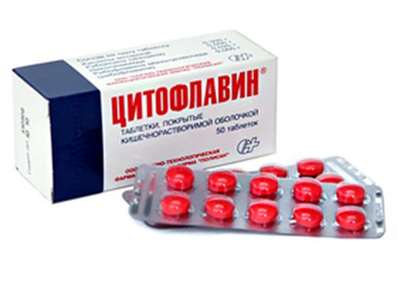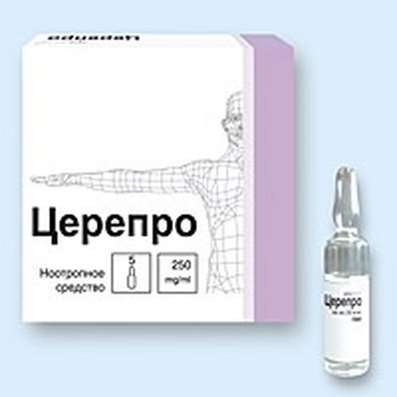Instruction for use: Peritol
I want this, give me price
Dosage form: syrup; tablets
Active substance: Cyproheptadine*
ATX
R06AX02 Cyproheptadine
Pharmacological group
Antiallergic agent - blocker of H1-histamine receptors [H1-antihistamines]
The nosological classification (ICD-10)
G43 Migraine: The pain of migraine; Migraine; hemiplegic migraine; Migraine headache; A migraine attack; Continuous headache; hemicranias
G44.0 Syndrome of "histamine" headache: Histamine cephalalgia; Histamine Tsefalgia; Headache Beam; Anxious cephalalgia; Cluster headache; Cryoneural neuralgia; Migraine Neuralgia
G44.1 Vascular headache, not elsewhere classified: Arteriogypotonic variant of headache; Vaginal pain; Vasomotor headache; Headache of vascular genesis; Headache of vascular origin
J30 Vasomotor and allergic rhinitis: Allergic rhinopathy; Allergic rhinosinusopathy; Allergic diseases of the upper respiratory tract; Allergic rhinitis; Allergic rhinitis seasonal; Vasomotor runny nose; Prolonged allergic rhinitis; All-year-round allergic rhinitis; All-year allergic rhinitis; Year-round or seasonal allergic rhinitis; All-the-year-round rhinitis of an allergic nature; Rhinitis vasomotor allergic; Exacerbation of pollinosis in the form of rhinoconjunctival syndrome; Acute allergic rhinitis; Edema of the nasal mucosa; Edema of the nasal mucosa; Edema of the mucous membrane of the nasal cavity; Swelling of the nasal mucosa; Swelling of the nasal mucosa; Pollinosis; Permanent allergic rhinitis; Rhinoconjunctivitis; Rhinosinusitis; Rhinosinusopathy; Seasonal allergic rhinitis; Seasonal allergic rhinitis; Hay rhinitis; Chronic allergic rhinitis; Allergic diseases of the respiratory tract
J30.1 Allergic rhinitis caused by pollen of plants: Hay fever; Hay fungus; hay fever; Hypersensitivity to pollen of plants; Polyposis allergic rhinosinusitis; Seasonal pollinosis; Seasonal rhinitis
L20 Atopic dermatitis: Allergic diseases of the skin; Allergic skin disease noninfectious etiology; Allergic skin disease etiology nemikrobnoy; Allergic skin diseases; Allergic skin lesions; Allergic reactions on the skin; atopic dermatitis; Allergic dermatosis; Allergic diathesis; Allergic itching dermatosis; Allergic skin disease; Allergic skin irritation; allergic Dermatitis; atopic Dermatitis; allergic dermatoses; exudative diathesis; Itchy atopic eczema Itchy allergic dermatosis; Allergic skin disease; Cutaneous allergic reaction to drugs and chemicals; Cutaneous reactions to medications; Skin and allergic disease; Acute eczema; common neurodermatitis; Chronic atopic dermatitis; Exudative diathesis
L20.8 Other atopic dermatitis: Constitutional neurodermatitis; Chronic neurodermatitis; Restricted neurodermatitis; Allergic eczema; Atopic eczema; Children's eczema; Diffuse neurodermatitis; Neurodermatosis; Neurodermatitis; Neurodermatitis diffuse; Neurodermatitis limited; Neurodermatitis; Dermatosis of a neurogenic origin
L23 Allergic contact dermatitis: Allergic dermatitis;Purulent allergic dermatopathies; Contact allergic reaction; Contact allergic dermatitis; Contact allergic dermatitis; Photoallergic contact dermatitis
L25 Contact dermatitis, unspecified: Intertriginous dermatitis; Contact Eczema; Contact dermatitis; Contact dermatitis of non-microbial etiology; Contact dermatitis; Skin wetting surface; Fractures; Intertrigo; Skin Difficulty; Subacute and chronic contact dermatitis; Phlebotoderma; Simple contact dermatitis complicated by impetigo
L29 Itching: Itching with partial obstruction of the biliary tract; Dermatitis itchy; Dermatosis with persistent itching; Other itching dermatoses; Itching dermatoses; Itching allergic dermatosis; Itching dermatitis; Itching dermatosis; Itching itch; Excruciating itching; Severe itching; Endogenous itching; Skin itching with dermatosis; Restricted itchy dermatitis; Itching of the skin; Itchy scalp; Itching eczema
L30.9 Unspecified Dermatitis: Allergic dermatoses complicated by a secondary bacterial infection; Anal eczema; Bacterial maturation; Varicose Eczema; Venous dermatitis; Inflammation of the skin; Inflammation of the skin upon contact with plants; Inflammatory Skin Disease; Inflammatory Skin Diseases; Inflammatory Skin Diseases; Inflammatory skin reactions; Inflammatory processes of the skin; Hypostatic dermatitis; Fungal Eczema; Fungal dermatosis; Dermatitis; Dermatitis is stagnant; Dermatitis and eczema in the anal area; Dermatitis acute contact; Perianal dermatitis; Dermatosis; Dermatosis of the scalp; Dermatosis of psoriasis; Dermatosis with persistent itching; Dermatoses; Dermatoses itchy; Other itching dermatoses; Significant eczematous manifestations; Itching with dermatoses; Itching eczema; Itching dermatoses; Itching dermatitis; Itching dermatosis; True eczema; Skin reaction to insect bites; Skin itching with dermatosis; Constitutional eczema; Weeping eczema; Drowsing inflammatory skin disease; Dying Infectious-Inflammatory Skin Disease; Non-allergic dermatitis; Nummular eczema; Acute contact eczema; Acute inflammatory skin disease; Acute dermatosis; Acute severe dermatosis; Perianal dermatitis; Superficial dermatosis; Subacute Contact Eczema; Simple dermatitis; Occupational dermatitis; Psychogenic dermatosis; Bubble dermatitis of newborns; Pustular eruptions; Irritation and redness of the skin; Low-flammable eczema; Dry atrophic eczema; Dry eczema; Toxic dermatitis; Ear eczema like dermatitis; Chronic eczema; Chronic dermatosis; Chronic dermatosis; Chronic common dermatosis; Scaly papular dermatosis; Eczema; Eczema anal region; Eczema of the hands; Eczema Contact; Eczema lichenized; Eczema Nummular; Eczema acute; Eczema acute contact; Eczema subacute; Eczematous dermatitis; Eczema-like rashes; Ecome exogenous; Endogenous eczema; Gluteal dermatitis; Limited itching dermatitis
L50 Urticaria: Idiopathic chronic urticarial; Injury Urticaria; Chronic urticarial; Hives of the newborn
L50.9 Hives, unspecified: Chronic recurrent urticarial; Acute urticarial
R63.0 Anorexia: Anorexia; Anorexia in liver disease; Lack of appetite; Easing appetite; Appetite Disorders; Reduced appetite; Decreased appetite
R64 Cachexia: Cachexia for oncological diseases; Cachexia in incurable oncological patients
T78.3 Angioedema: Edema Quincke; Laryngeal exacerbation with angioneurotic edema; Recurrent angioedema; Allergic edema; Recurrent swelling of Quincy
T78.4 Unspecified Allergy: Allergic reactions to insulin; Allergic reactions to insect stings; Allergic reactions similar to systemic lupus erythematosus; Allergic diseases; Allergic diseases of mucous membranes; Allergic diseases and conditions resulting from increased release of histamine; Allergic diseases of mucous membranes; Allergic symptoms; Allergic symptoms in the mucous membranes; Allergic reactions; Allergic reactions caused by insect bites; Allergic reactions; Allergic conditions; Allergic laryngeal edema; allergopathy; allergic conditions; Allergy; House dust allergy; Anaphylaxis; Cutaneous reactions to medications; Skin reaction to insect stings; Cosmetic allergy; Drug allergy; Acute allergic reaction; Laryngeal edema allergic genesis and background radiation; Food and drug allergy
T80.6 Other serum reactions: Serum disease; Allergic reaction like serum sickness; Serous disease accelerated
W57 Bite or sting with a non-toxic insect and other non-venous arthropods: An allergic reaction to insect bites; Skin reaction after insect bite; Reactions to insect bites; Mosquito bite; Bite of bloodsucking insects; A bite of an insect; The bite of the wasp
Z54 recovery period: The recovery period; The recovery period after illness; Recovery; The recovery from the flu and colds; Recovery after illness; The lack of mineral salts in the period of convalescence; The period of recovery after illness; The period of recovery after illness and surgery; The period of recovery after a serious illness; The period of convalescence after illness; rehabilitation period; rekovalestsentsii period after infectious diseases; decubation; The period of convalescence after surgery and infectious diseases; The period of convalescence after prolonged infections; The period of convalescence after serious diseases; The period of convalescence after severe infections; Rehabilitation period; convalescent state; Convalescence after illness; Convalescence after infectious diseases; Convalescence after debilitating diseases; Convalescence after infectious diseases; Convalescence at an elevated blood loss; Status of convalescence after illness
Composition and release form
Tablets - 1 table.
Cyproheptadine hydrochloride 4 mg
(In the form of cyproheptadine hydrochloride sesquihydrate - 4.3 mg)
Auxiliary substances: magnesium stearate; gelatin; talc; potato starch; Lactose monohydrate
In the blister 10 pcs .; In a pack of cardboard 2 blisters.
Syrup - 1 fl.
Cyproheptadine hydrochloride 0.4 mg
(In the form of cyproheptadine hydrochloride sesquihydrate 0.43 mg)
Excipients: ethanol (96%); Sorbic acid; Sucrose; Sodium hydroxide; Glacial acetic acid; Tutti-frutti aromatic additive; Ariovit "Sunset" yellow (dye "Sunset Sun" yellow C.I. 15985 E110); purified water
In bottles of dark glass of 100 ml; In a pack of cardboard 1 bottle.
Pharmacology
Mode of action - antiallergic, antihistamine, antiserotonin.
Dosing and Administration
Inside. Taking into account the sedative effect, characteristic for the beginning of treatment, the first dose of the drug is recommended in the evening, after dinner.
Adults: the usual daily dose - 12 mg (1 table or 10 ml of syrup 3 times a day).
Chronic urticaria: a daily dose of 6 mg (1/2 table or 5 ml syrup 3 times a day).
Acute migraine: once 4 mg (1 table or 10 ml of syrup), in the absence of effect after 30 minutes, repeat the same dose. The total dose taken within 4-6 hours, should not exceed 8 mg (2 tables or 20 ml of syrup).
Anorexia: 12 mg / day (1 table or 10 ml of syrup 3 times a day).
Supportive therapy: usually 12 mg / day (1 table or 10 ml of syrup 3 times a day).
The maximum daily intake for adults is 32 mg / day (2 tablets or 20 ml of syrup 4 times a day).
Special patient groups
Children aged 2 to 3 years are recommended to prescribe Peritol® as a syrup.
Tablets: at the age of 3 to 7 years - the daily dose is 4-6 mg / day (for 1/2 table 2 or 3 times a day); From 7 to 14 years - 8-12 mg / day (1 table 2-3 times a day).
Syrup: at the age of 2 to 7 years - the daily dose is 0.25 mg / kg body weight or 8 mg / m2 body surface (2-6 mg per day, divided into 2-3 doses, 5 to 15 ml Syrup); From 7 to 14 years - the daily dose is 8-12 mg (10 ml of syrup 2-3 times a day).
If you need an extra dose, you should give it before bedtime. The daily dose should not exceed 16 mg.
If the liver function is impaired, a dose reduction may be required due to a decrease in the metabolism of the active substance (usually a 2-fold decrease in the dose).
In case of renal insufficiency, a dose reduction may be required. The main part of the administered dose is excreted by the kidneys (usually a 2-fold decrease in the dose).
Conditions of leave from pharmacies
On prescription.
Storage conditions of Peritol
At a temperature of 15-25 ° C.
Keep out of the reach of children.
Shelf life of the drug Peritol
Tablets 4 mg - 5 years.
Syrup 40 mg / 100 ml - 3 years. The open vial should not be stored for more than 4 weeks.
Do not use after the expiry date printed on the package.

 Cart
Cart





